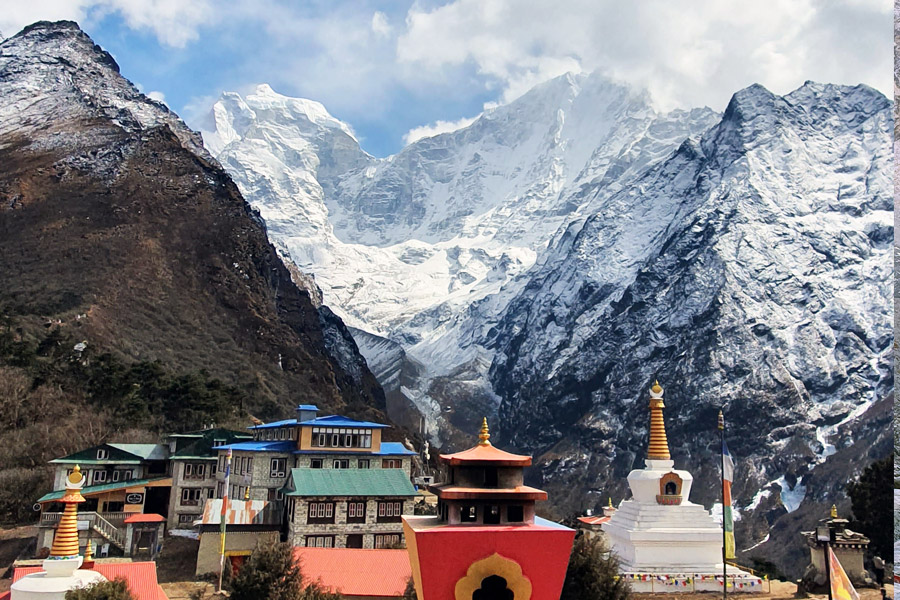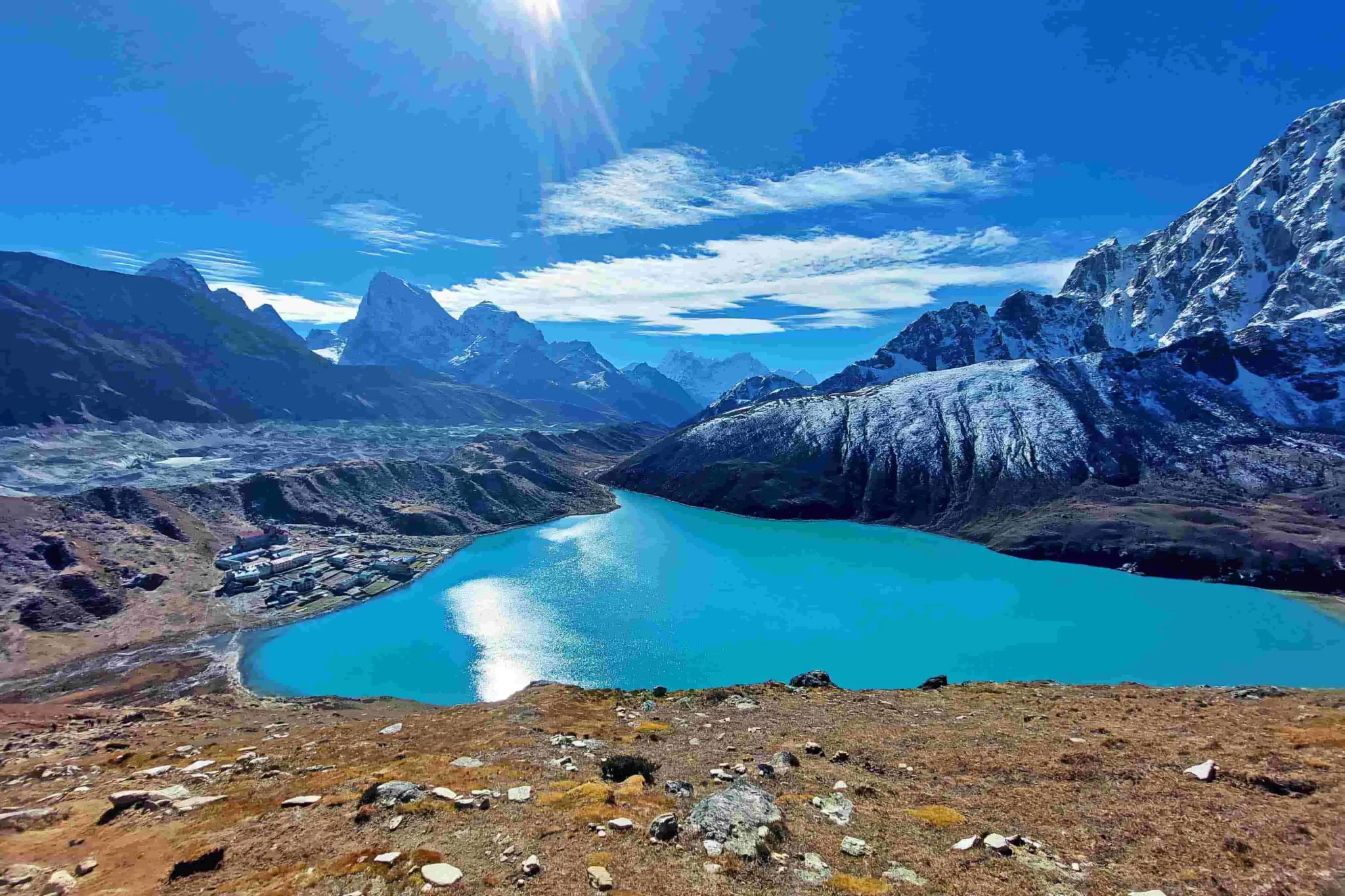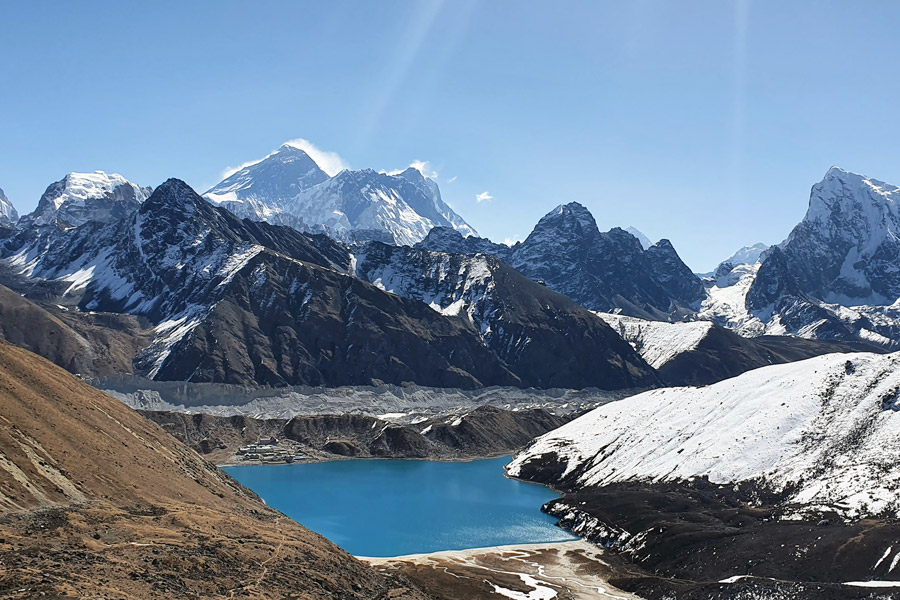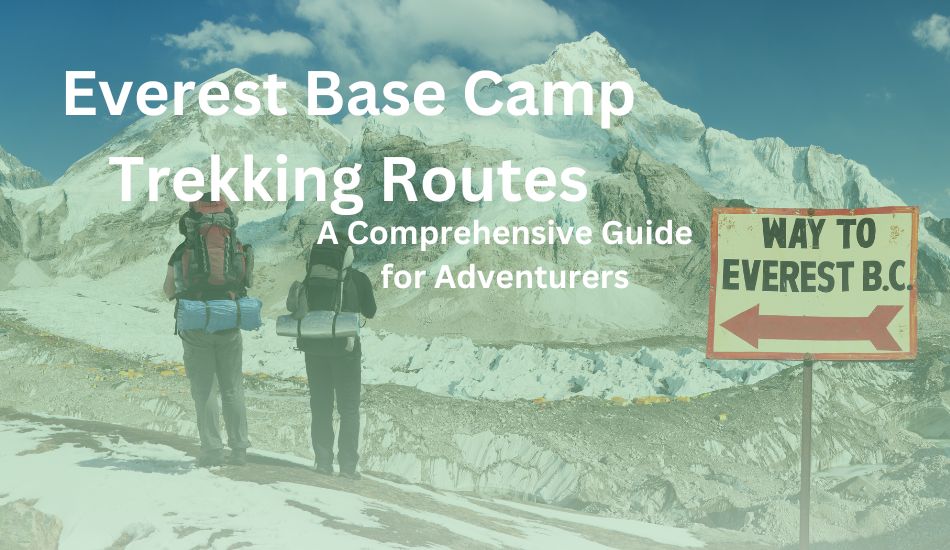Everest Base Camp Trekking Routes: A Comprehensive Guide for Adventurers
Everest Base Camp, also known as EBC, is located in the Himalayas and is one of the most famous treks that tourists from all over the world want to experience. A mere 5,364 meters (17,598 feet) above sea level, the Everest Base Camp is the starting point for mountaineers who wish to conquer the tallest peak in the world, Mount Everest. But for trekkers, this is not true because the trek itself is a very interesting and beautiful chance to observe wonderful views, get familiar with the culture of people living nearby, and mainly the feeling of satisfaction coming from the fact that you walked one of the most famous treks in the world.
So here, you will discover everything about the Everest Base Camp trekking routes, some recommendations, and expectations to prepare for the trip.
Why Choose the Everest Base Camp Trek?
This trek is not just about getting to the base of the highest mountain in the world, and that is why people trek to the EBC. It is a thrilling virtual journey which guides the audience through the soul of the Khumbu, the land of Sherpa people and climbers of the Everest, the land of monasteries of medieval times. You will meet magnificent sceneries such as glaciers, icefalls and impressive views of some of the highest mountains in the world.
What makes the trek even more appealing is that it can be done by mere reasonable level of fitness and no climbing experience is required. However, the high altitude, besides the fact that days are longer than nights all year round, makes it a quite tasking trek but very rewarding.
Trekking Routes to Everest Base Camp
Those who are in search of the EBC trek will have a general feeling that there is only one trail, though in reality, there are several EBC trekking trails. Below are the most used trekking trails, with brief details on why each of them is so popular.
1. Classic Everest Base Camp Trek (via Lukla)
The Classic Everest Base Camp Trek is the most typical and most laid-back. The Everest Base Camp Trek is the classic trek that most trekkers take when they come to Nepal. Beginning the journey with an aerial view of the countryside with the main starting point being Lukla, which is a small town steeped high up in the mountains, is the shortest and quickest way to get to the base of Mount Everest. 
Key Highlights:
Duration: 12-14 days
Starting Point: Lukla (2,860 meters)
Highest Point: Everest Base Camp (5,364 meters)
Best Time to Trek: March to May and September to November
Accommodation: Teahouses
The Journey:
Lukla to Phakding (2,610m): On reaching the Lukla, the first day’s trek is comparatively easy to Phakding, and this is a sort of preparation for the upcoming days of the trek.
Phakding to Namche Bazaar (3,440m): From Phakding, the trail move side the Dudh Kosi River with crossing numerous suspension bridges arising sharply to Namche Bazaar – the largest Sherpa town.
Acclimatization in Namche: Namche is the first place where the trekkers spend an extra day in order to acclimatize with the climate of the region. You can visit villages such as the Khumjung village and take a tour of the ever famous Everest View Hotel to have the first sight of the highest mountain in the world.
Namche Bazaar to Tengboche (3,860m): The trail goes on via sparsely wooded coniferous forests, and through ridge top, it reaches Tengboche, the site of the world-famous Buddhist monastery.
Tengboche to Dingboche (4,410m): With the rise of altitude, the trees and other plants begin to grow thin, meaning that there is less density of vegetation. Dingboche is a beautiful settlement which is parked at one valley and exploded with great mountain like Ama Dablam as well as Lhotse.
Dingboche to Lobuche (4,910m): This is one of the most demanding days since the altitude, along with the thinning of air, starts to affect a person. The trek further goes ahead the sad wall of those climbers who have been killed in the Everest region.
Lobuche to Everest Base Camp (5,364m): The last day to reach the Everest Base Camp is very tiring as it takes almost the whole day. It follows the edge of the Khumbu Glacier by having the hikers view awesome ice formations and mountains. Many trekkakers then proceed further up to Gorak Shep; instead, they stay and take a night halt at EBC.
Gorak Shep to Kala Patthar (5,545m): As it is noticed, the majority of the trekkers prefer to move up to Kala Patthar before sunrise to have a view of Mount Everest. This is as high as most trekkers will get, and the scenery is breathtaking.
Challenges:
The Classic EBC route is strenuous, especially due to the high altitude. Proper Acclimatization is essential to avoid altitude sickness.
Recommended read: Everest Rainbow Valley Death Zone.
2. Gokyo Lakes Trek (Gokyo Valley to Everest Base Camp)
For trekkers who desire an off-the-beaten-track course that is not very steep like the classic EBC course, the Gokyo Lakes Trek will suit you best. From this trail breaks off to Namche Bazaar and leads through the untouched area of Gokyo Valley, which is famous for its blue glacial lakes and incredible mountain views.
Key Highlights:
Duration: 16-18 days
Starting Point: Lukla
Highest Point: Gokyo Ri (5,357 meters), Everest Base Camp (5,364 meters)
Best Time to Trek: March to May and September to November
Accommodation: Teahouses
The Journey:
Namche Bazaar to Dole (4,038m): Trail to Gokyo starts from Namche and the major part of the trail passes through forests of rhododendrons and few minor settlements of Sherpas.
Dole to Machhermo (4,470m): It also bears mention that as the altitude rises, the density of biotopographic formations decreases, and one can observe fewer plants.
Machhermo to Gokyo (4,800m): The most memorable part of this trek involves an exploration of Gokyo Lakes, where one gets the chance to see blue-colored lakes with mountains providing a natural background to the lakes.
Climb Gokyo Ri (5,357m): To get beautiful and unique views of Mount Everest, Makalu, Kantenga, Lhotse, Numbur, Lhotse Shar, Gyachung Kang, Pumari Chhish and many other snow-capped peaks, specially touch up Gokyo Ri which is one of the endemic point of Gokyo.
Crossing the Cho La Pass (5,420m): After Gokyo, the trail rejoins the EBC trail after crossing Cho La Pass. The day trekking will start from Gokyo towards Cho La Pass, then again join the EBC trail. This part of the trek is quite tough as there are steep ascents potential snow here.
Everest Base Camp: The trekkers then retrace their steps to join the main trail to EBC, as described above in the section on the Classic EBC Trek from Lobuche.
Challenges:
It is quite challenging to cross Cho La Pass, and the extra days at higher altitudes require proper management of acclimatization. But the view and the less crowded tracks make it an even better option than the standard EBC trek.
3. Three Passes Trek
Out of all treks to the Everest Base Camp, the Three Passes Trek is the most demanding trek that one can undertake in the Himalayas. This kind of trek involves climbing three high passes which include Kongma La, Cho La and Renjo La and this makes the trekkers have close views of the remote areas in the Khumbu region.

Key Highlights:
Duration: 18-21 days
Starting Point: Lukla
Highest Point: Kongma La Pass (5,535 meters), Everest Base Camp (5,364 meters)
Best Time to Trek: March to May and September to November
Accommodation: Teahouses
The Journey:
Namche Bazaar to Kongma La Pass (5,535m): The first of the three passes – Kongma La is steeper and finally you get close sighting of Makalu the fifth highest peak in the world.
Crossing Cho La and Renjo La Passes: These high altitudes passes facilitates some of the finest view of the whole trek including the view of the entire Everest region. Cho La also serves as entry point to the Gokyo Lakes while Renjo La which is comparatively less crowded has stunning view of Everest from the west.
Everest Base Camp and Kala Patthar: The final days of the trek take you to the Everest Base Camp and, for those who would like to, to the viewpoint on Kala Patthar to see the sunrise.
Challenges:
Indeed, Three Passes Trek though a classical trek is not meant for the faint-hearted. They have very steep drops and rise to high altitudes making it to be one of the most challenging trekking routes to the EBC. Nevertheless, the advantages are tremendous, which means less people, if any at all, and some of the finest sceneries of the entire Himalayas.
4. Jiri to Everest Base Camp (The Original Route)
Before the construction of the Lukla airport, trekkers began their treks from Jiri a village that is situated considerably lower in altitude. This route, although, is rather longer but it will provide you how the traditional manner of trekking to Everest is done.
Key Highlights:
Duration: 20-23 days
Starting Point: Jiri (1,905 meters)
Highest Point: Everest Base Camp (5,364 meters)
Best Time to Trek: March to May and September to November
Accommodation: Teahouses
The Journey:
Jiri to Lukla: Again, this section of the trek takes approximately six to seven days through beautiful forests, terraced farmland, and a small village.
Joining the Classic EBC Route: From Lukla, the trail joins the Classic EBC trail from Phakding up to the base camp.
Challenges:
For the enthusiasts who love trekking, the Jiri to Everest Base Camp trek is fairly tough, with much steep up and down movements in the lower Himalayan region. But it is more real and it is possible to acclimatize better as opposed to getting a flight to Lukla.
Best Time for the Everest Base Camp Trek
Trekking to the Everest Base Camp is best done at a certain time of the year, although it all depends on the weather and the choice of the individuals involved. The two main trekking seasons are:
Spring (March to May): This is one of the most convenient times of the year to go trekking as the weather is calm, the sky is clear, and the Rhododendrons make the trekking area colorful.
Autumn (September to November): The other major trekking season, autumn, is also favored with a clear and cool climate besides dry terrains.
Training and Preparation for the Everest Base Camp Trek
The trek to Everest Base Camp is not a walk in the park. It requires good physical fitness, endurance, and preparation. To prepare, consider doing the following:
Cardio and Strength Training: Focus on building stamina with long hikes, running, cycling, or swimming. Strengthen your legs, core, and back to handle the uphill and downhill trekking.
Altitude Training: If possible, practice hiking at higher altitudes to help your body adjust to lower oxygen levels.
Pack Light: Carry only the essentials to avoid overburdening yourself during the trek. Most treks offer porters, but it’s best to keep your own pack light.
Conclusion
Everest Base Camp trekking is a great adventure that offers the company of nature, interaction with people, and personal achievement. Breaking down the many faces of the Himalayas, where multiple paths lead to the same destination, there is a trek for every kind of kind of trekker to the Everest base camp. All the trails, ranging from the most famous Classic EBC route, the quiet, serene trails of the Gokyo Lakes, or the rigorous Three Passes, are all life-changing.
Therefore, bring your luggage, tie your shoelaces, and let the adventure begin!
Read our blog, Off-the-beaten-path treks in Nepal.
FAQs
What is the best route for the Everest Base Camp trek?
The most popular and, at the same time, the easiest way to get to EBC is through Lukla, which is used to reach EBC through the most direct route. More yet, more seclusion can be enjoyed in the Gokyo Lakes and those treks called the Three Passes.
How difficult is the Everest Base Camp trek?
Trekking is adventurous but the trek is steeped in high altitude and long days of trekking however it does not involve technical rocky climbing. Obviously, with right preparation/conditioning of the body regarding the climatic conditions that is Acclimatization most trekkers are able to accomplish the trek.
How long does it take to trek to Everest Base Camp?
The most popular length is a 12 to 14 day trek utilising the popular Lukla to Everest Base Camp and back route. Other routes can take longer, anything between 18 and 21 days for example, the Three Passes Trek.
What is the best time to trek to Everest Base Camp?
The two ideal seasons for trekking in Nepal is the spring season which is between the months of March to May and autumn which is from September to November. These seasons afford favorable weather weather to climbers, good visibility and relatively the best conditions to undertake the treks.
Do you need a guide for the Everest Base Camp trek?
Even for this area solo hiking is possible, but it is safer to hike with a guide, especially the lesser-known Gokyo Lakes and famous Three Passes trek. Cultural impressions are also given to you by guides.
How do I prepare for the Everest Base Camp trek?
Cardiovascular-there is warming-up and strengthening exercises, endurance hikes and strength-building hikes, altitude training if possible. Traveling should be done in a minimalist way and it is useful to walk with a hiker appalled to acquire strength.


Leave Your Comment